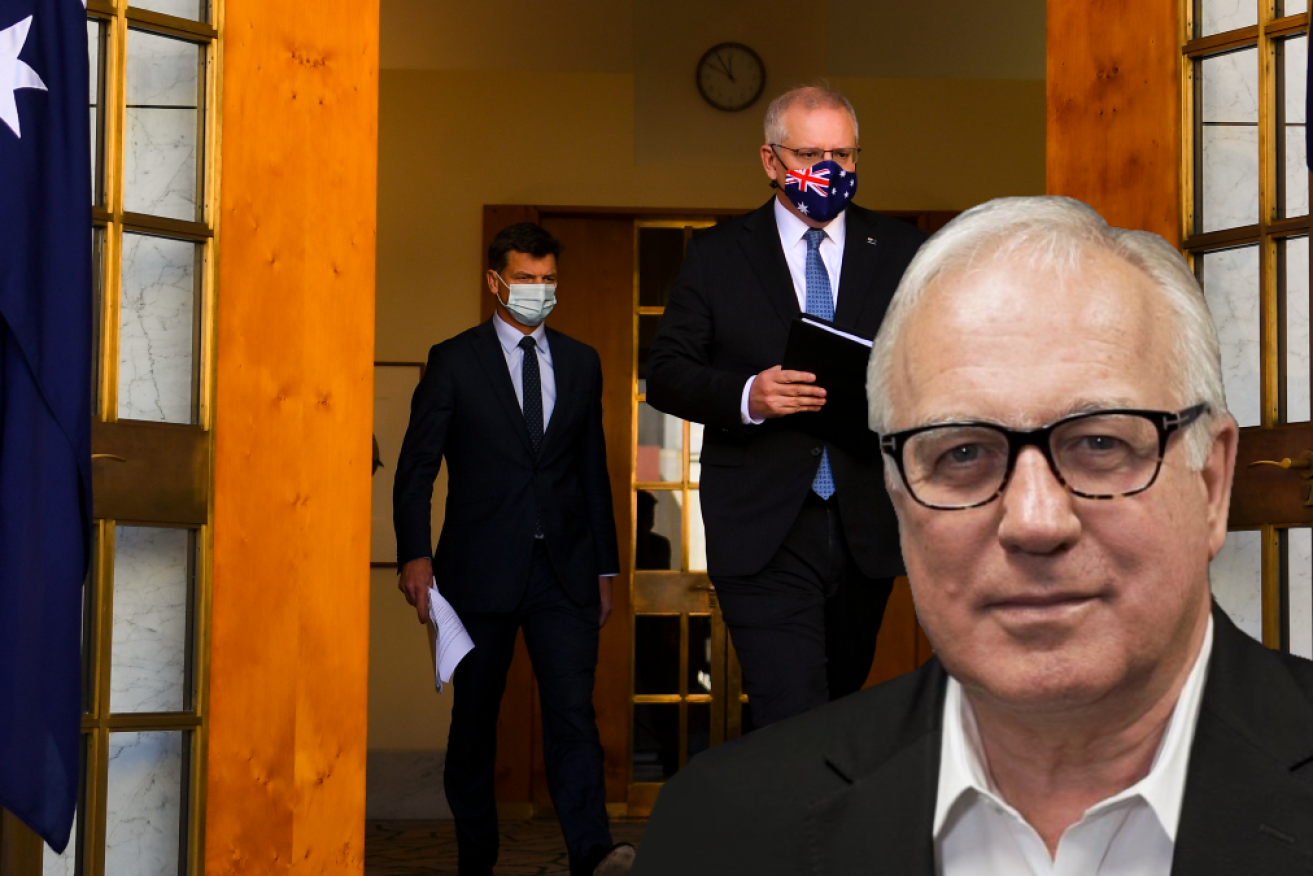Alan Kohler: The money for dealing with climate change will have to be printed


The government will have to abandon its aversion to budget deficits to successfully fight climate change, writes Alan Kohler. Photo: TND/AAP
The sixth IPCC assessment report makes it clear that dealing properly with climate change will require a whole new approach to government deficits and debt.
Not only do we have to get emissions down to net zero before 2050, we will also have to extract a lot of greenhouse gases from the atmosphere, using technology that doesn’t really exist.
That’s going to be enormously expensive, and governments in advanced nations will have to do most of it.
And they start with about $US60 trillion ($82 trillion) in debt because of the pandemic, which has cost about $US17 trillion ($23 trillion) in less than 18 months.
The good news is that the new approach needed has been well tested in the laboratory of the pandemic: The cost of it has been funded by central banks printing money and buying second-hand government debt, including in Australia.
It’s true that they haven’t provided fresh cash directly to government treasuries, but the quantitative easing, as they call it, has oiled the machinery of government financing.
For example, the Australian government has raised $173.1 billion in new debt since March 2020 over 117 auctions averaging $1.48 billion each, and now has $829.4 billion worth of debt securities on issue.
Bids at those auctions totalled $751.8 billion, so the government could have raised four times what it did.
Why so much bidding? Because the Reserve Bank was standing outside the “auction room” buying the paper second hand.
It is still buying $5 billion a week, which is a lot more than the government is selling at the moment.
That’s been happening all over the world: The cost of the pandemic to the world’s governments is estimated by the IMF at $US16 trillion ($22 trillion); separately, central banks have printed about $US17 trillion ($23 trillion) to buy second-hand government debt.
Call it what you like – quantitative easing, Modern Monetary Theory, debt monetisation or just monetary policy – without it, the money to fund the pandemic response would have been harder to raise and more expensive.
Demonisation of debt and deficit
Global warming will cost many times the cost of the pandemic, whether we’re talking about preventing it or paying the price of not preventing it.
Given the need for quantitative easing to fund the cheaper pandemic, it’s obvious that confronting climate change, and paying developing countries to join the effort, can only be funded if central banks stand behind governments to an even greater extent.
So the RBA and other central banks have a central role in the lead up to the Glasgow climate change conference in November.
They should now make a public commitment of their own to keep quantitative easing going indefinitely, so governments can raise the money to save the planet at bearable interest rates.
Yes, it might be inflationary, probably will be in fact, but reading the latest IPCC assessment report, it’s pretty clear that inflation will be the least of our problems.
This week, Deputy Prime Minister Barnaby Joyce expressed the reason central banks need to do this now: “What is the cost? Tell me the cost.”
This has long been the key blockage to emissions reduction.
It’s true that opposing action on climate change has been a rewarding crusade for conservatives, both in politics and the media, for three decades: They successfully turned scientific consensus into a political debate, paralysing policy.
But apart from cynical greed and ambition, of which there has been plenty, the genuine problem has been the demonising of government debt and distrust of government that has been the maypoles around which conservatives have danced for decades.
‘Whatever it takes’ mode
A massive expansion of the public sector is now inevitable and there will be very large budget deficits and an even bigger rise in government debt than we’ve ever seen, including in wartime.
The private sector simply can’t do the bulk of it, despite the rapidly growing voluntary carbon market and plenty of solid ESG (environment, social, governance) effort by companies and large investors, not to mention household rooftop solar.
If a serious effort to keep warming to 1.5 degrees results from the IPCC’s sixth assessment report, it will have to be led by government regulation and spending.
That especially applies in Australia because of its reliance on fossil fuel exports, and especially in Queensland and New South Wales.
It’s clear that the Australian coal industry will have to be shut down, either by government decree or lack of sales, so large parts of Queensland and NSW will become wastelands without government support.
But when governments think about supporting regions and people that lose their livelihoods, or investing in the new infrastructure needed, they shouldn’t have to worry about the political cost of deficits and debt.
The world must move to “whatever it takes” mode, and that means unlimited government bank accounts.
Alan Kohler writes twice a week for The New Daily. He is also editor in chief of Eureka Report and finance presenter on ABC news








